Pablo Picasso in 8 Periods: Everything You Need to Know
2023 is the 50th anniversary of the death of Pablo Picasso (1881-1973). A prolific producer of paintings, prints, ceramics, and sculpture, his work...
Catriona Miller 25 November 2023
Everyone knows Pablo Picasso and considers him the father of Cubism. Everyone also knows that success has many fathers. Today, let’s talk about Georges Braque, the second father of the success that Cubism has become. While Picasso quickly abandoned his child and moved on, Braque stuck with it and continued to create works with ties to cubist principles throughout his life.
Cubism is, without a doubt, one of the most important art movements of the 20th century. Where Impressionism started stepping away from the goal of objectively representing the real world, Cubism took the whole notion and threw it out the window. The radical break that Cubism allowed became a door open to continue exploring ideas further and further away from representative art, all the way to complete abstraction.
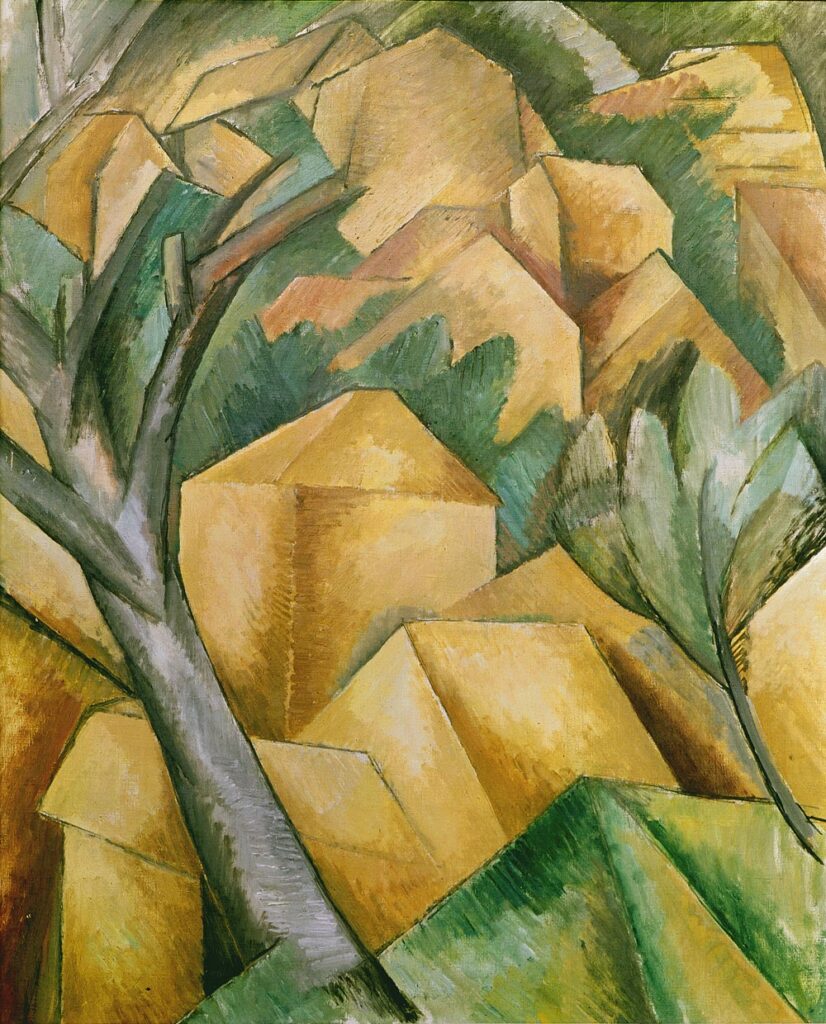
Georges Braque, Houses at L’Estaque, 1908, Kunstmuseum Bern, Bern, Switzerland.
It is broadly agreed that Cubism started in 1908 with the works by Pablo Picasso and Georges Braque. The style is typically divided into two phases: Analytical and Synthetic. The Analytical Cubism phase lasted from 1908 to 1912 and is characterized by a limited color palette that allowed the artists to focus on the object.
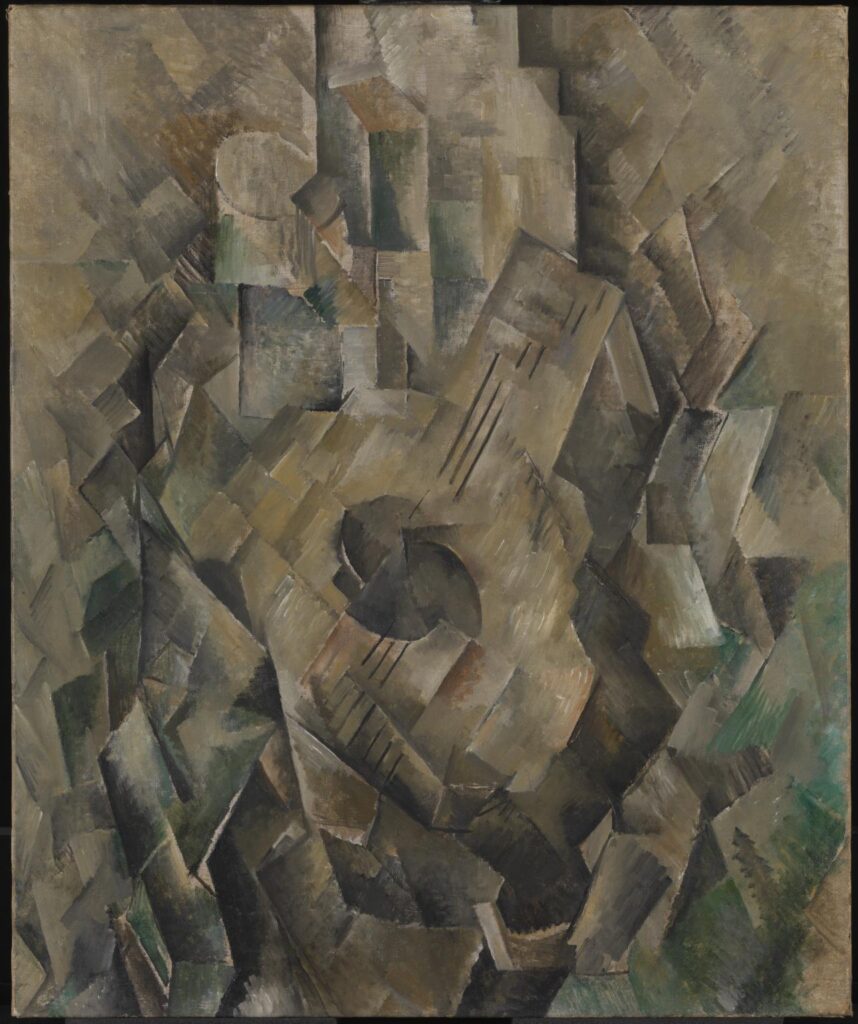
Georges Braque, La Guitare, 1909-1910, Tate Modern, London, UK.
The Synthetic Cubism phase started in 1912 and ‘officially’ ended in 1914 with the beginning of World War I. That, of course, did not mean Cubism ended and was not adopted by new painters, but the initial exploration into the possibilities of the style was done by then and ceased then. It was a style icon, and certain foundations had been agreed upon.
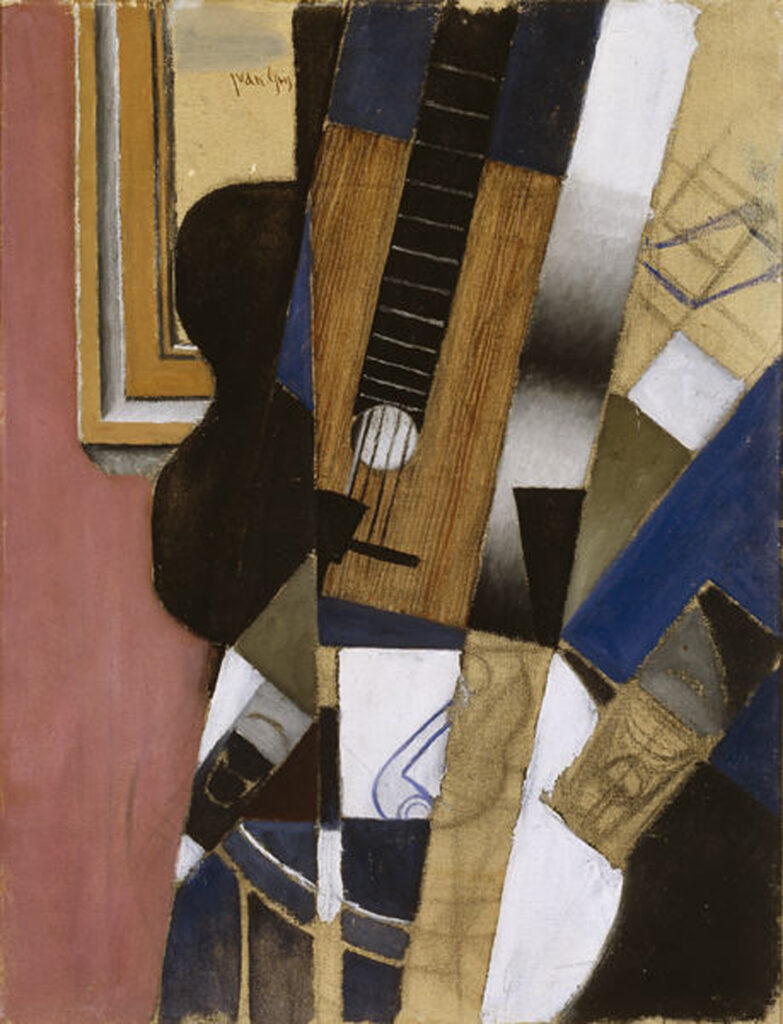
Juan Gris, Guitar and Pipe, 1913, Dallas Museum of Art, Dallas, TX, USA.
Georges Braque was born in 1882 in Argenteuil to a working-class family. His father was a house painter and a decorator, and Braque initially followed in his footsteps. Around 1900, he moved to Paris, where he apprenticed as a decorator, but by 1903, he started attending Académie Humbert.
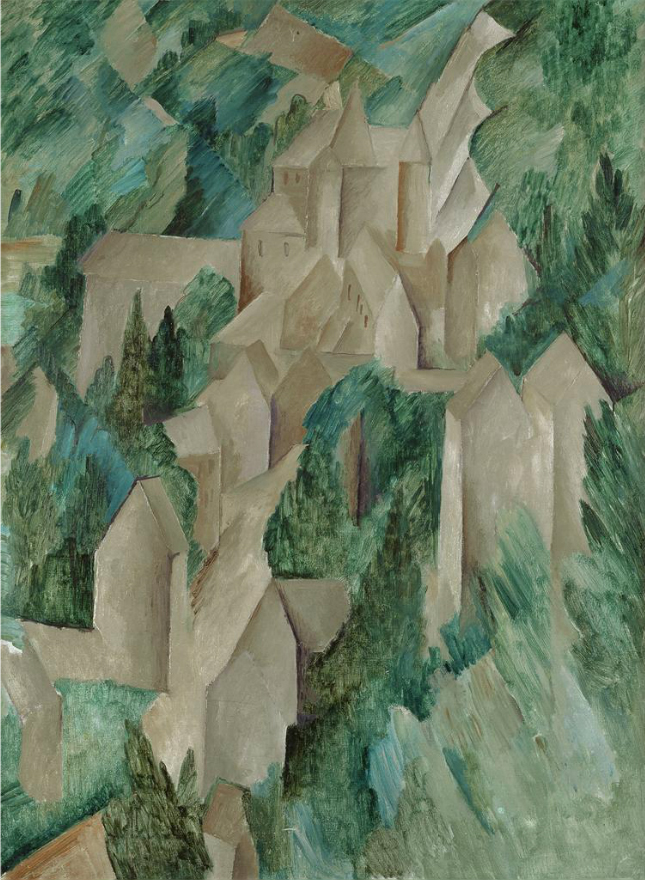
Georges Braque, The Castle at Roche-Guyon, 1909, Moderna Museet, Stockholm, Sweden.
Georges Braque’s early works were impressionistic, but after seeing an exhibition of the Fauvists in 1905, his style changed to reflect what he had learned there. In 1907, Braque exhibited his fauvist works at Salon des Indépendants, but that year proved significant in his career for another reason. It was the year of a large retrospective of the works of Paul Cézanne. This exhibition deeply impacted Georges Braque. He started experimenting with simultaneous perspective and focused on the geometrical aspects of the objects he was painting.
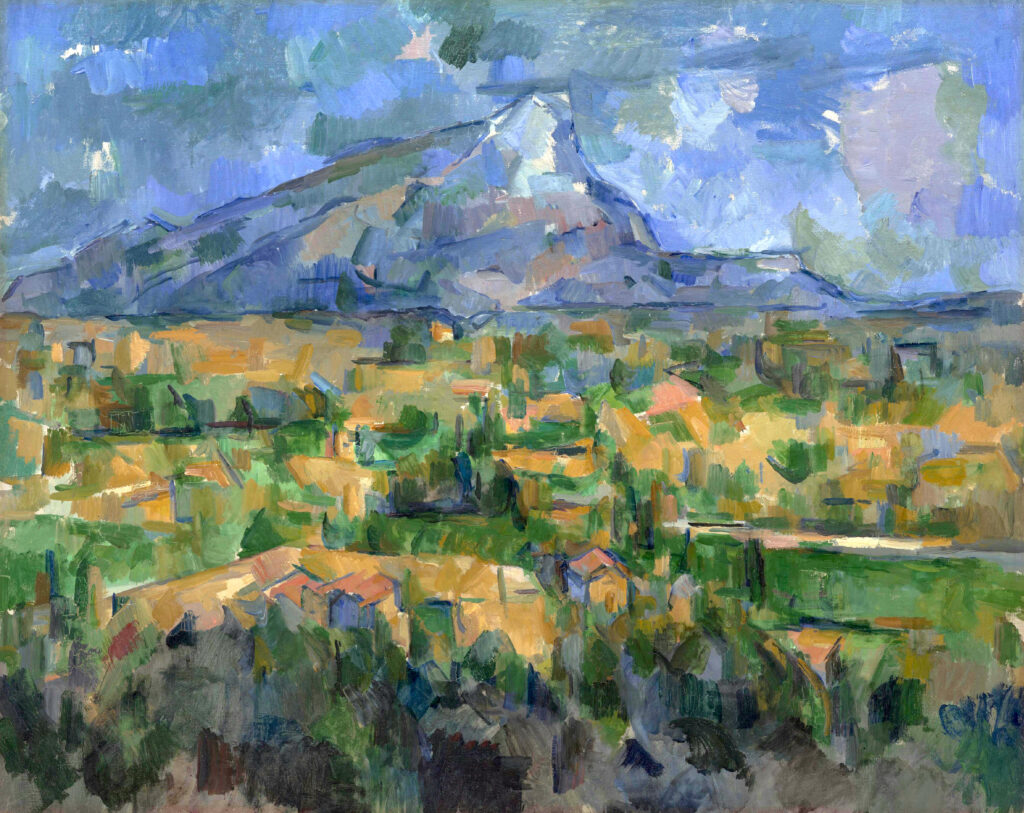
Paul Cézanne, Mont Sainte-Victoire, 1904, Philadelphia Museum of Art, Philadelphia, PA, USA.
It was also in 1907 that Braque saw Picasso’s Les Demoiselles d’Avignon, which certainly resonated with the impact of Paul Cézanne’s work. Over the next few years, Pablo Picasso and Georges Braque worked closely together, their cooperation broken by the advent of World War I in 1914.
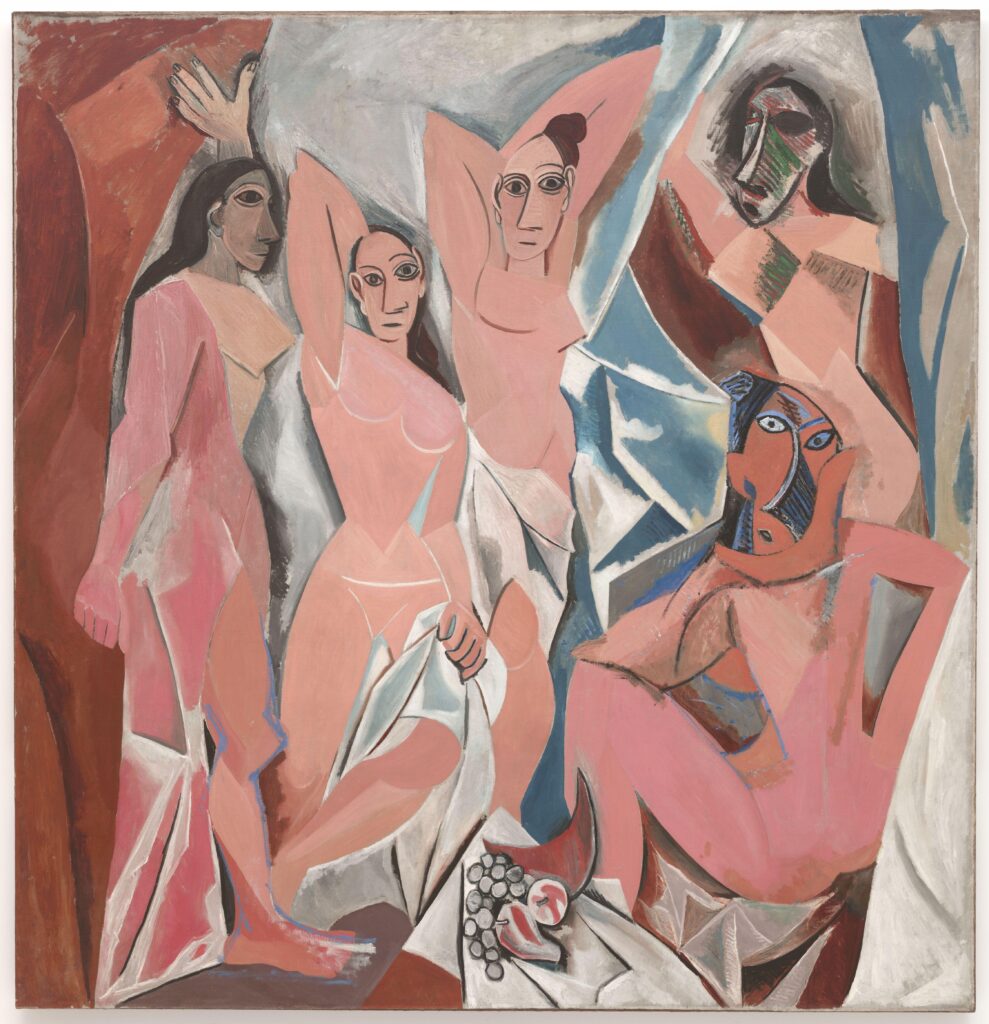
Pablo Picasso, Les Demoiselles d’Avignon, 1907, Museum of Modern Art, New York, NY, USA. Detail. © 2023 Estate of Pablo Picasso / Artists Rights Society (ARS), New York.
Between 1908 and 1912, the two artists progressed in developing the Analytical phase of Cubism. They dissected their objects view by view, exploring how to show them from all angles, called simultaneous perspective and fragmentation. They abandoned the rigor of linear perspective to find modes of presentation more attuned to the rapidly changing world. This focus on a new approach to perspective resulted in a subdued color palette to avoid any distractions from the main shift in their work.
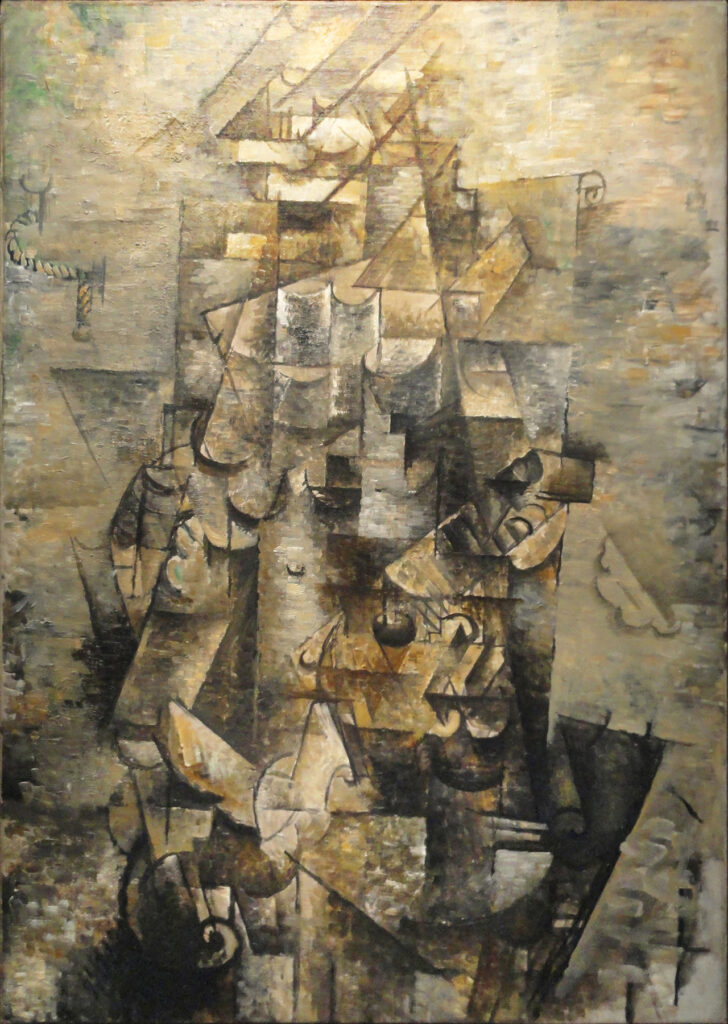
Georges Braque, Man with a Guitar, 1911-1912, Museum of Modern Art, New York City, NY, USA.
In 1912, Georges Braque invented papier collé, or the technique known today as collage, utilizing ready pieces of paper, newsprint, wallpaper, and other sources to create a composition. This pushed Cubism into its next phase, known as Synthetic, where the focus was not on breaking the object into its varied viewpoints but on flattening it out to remove any illusion of three-dimensionality.
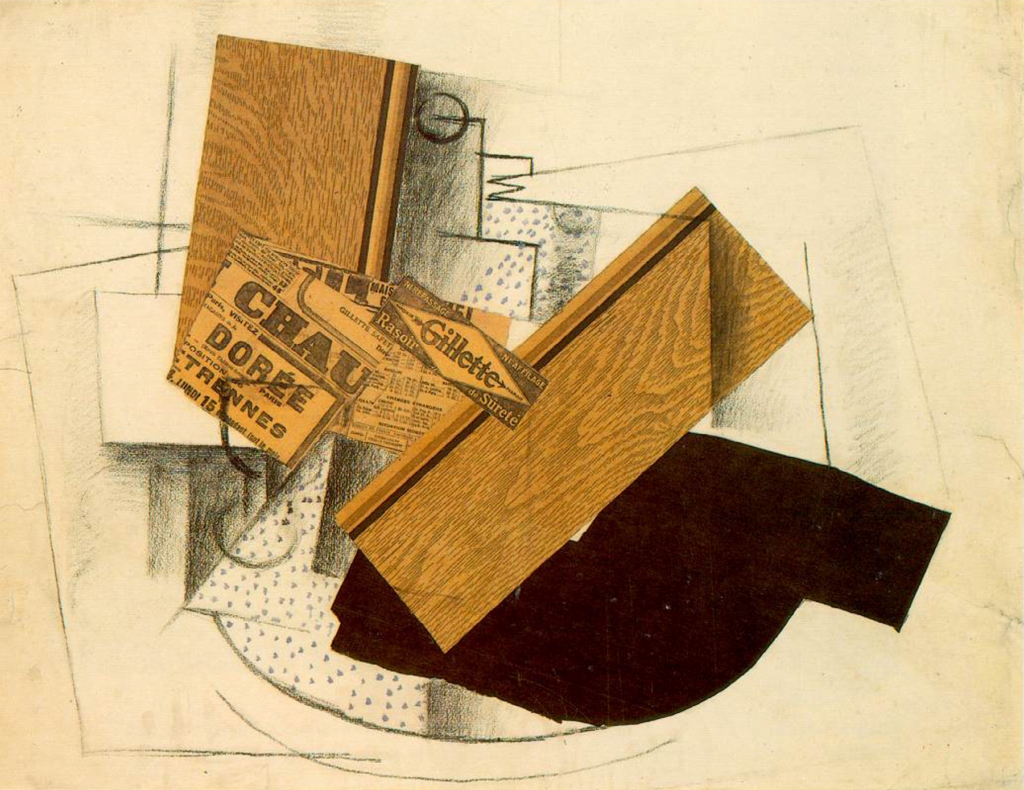
Georges Braque, Still Life on a Table Gillette, 1914, Centre Pompidou, Paris, France, Historia Arte
In 1914, Georges Braque enlisted in the French Army, and his collaboration with Pablo Picasso ended. During the war, he sustained a severe head injury that required a long period of recuperation. He returned to painting in 1916, infusing his work with more color but never straying too far from cubist principles and focusing on still-lifes. Where Picasso was loud and dramatic, Braque remained quiet and persistent.
DailyArt Magazine needs your support. Every contribution, however big or small, is very valuable for our future. Thanks to it, we will be able to sustain and grow the Magazine. Thank you for your help!